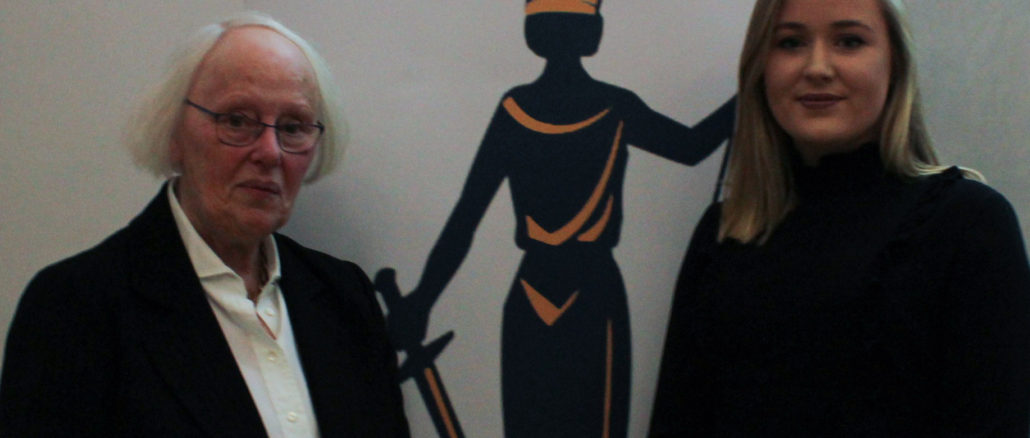
[dropcap]As[/dropcap] you opened the large wooden doors into lecture room CG86 in the Henry Grattan building on Monday March 6th, you were met with a deluge of students. It was 6pm and classes were completed for the day, as the sky began to darken outside. Animated chatter and girly giggles reverberated throughout the room as friends discussed the number of words needed for the law essays they still had yet to complete despite the looming deadlines.
It was a collection of about 50 law students who filled the room; they were attending a talk by the Honorary Ms. Justice Mary Laffoy. It is a rare sight to witness students sitting patiently and attentively even after lectures have concluded for the day. What was even more atypical than that was the fact that the majority of students in attendance were female.
The legal profession has always traditionally been a male dominated profession but we have made some excellent progress in the very recent past, according to Ms. Justice Mary Laffoy who spoke at the event run by DCU Law Society.
Ms. Honorary Justice Mary Laffoy is currently chairing The Citizens’ Assembly and she was appointed a judge of the Supreme Court in 2013. She described the evolution of the legal profession throughout the years that she has been practicing law and she is very excited for the continued progress that she is certain will ensue.
By the end of 2014, it was announced that Ireland had more female solicitors at 4,623 than male solicitors at 4,609. This was exactly 92 years after the first female solicitor was admitted to the profession and a first for any legal profession in the entire world.
However, in the higher ranks of the legal profession, it is still very much dominated by men. Some 33.2 per cent of the judicial system are female judges. Sitting in our Supreme Court, there are only 2 female justices currently.
When she was studying law in UCD, there were only 2 females in her class. In January 2017, it is almost 50 percent women and 50 percent men who are enrolled in first year in law schools in America, according to research conducted by the American bar.
Ms. Justice Laffoy does not believe that there is anything we can do to help further the gender balance, she believes that this is merely something that will occur over time, as has occurred in the last number of years.
Holding a high position in the legal profession requires a lot of commitment, and it is your main priority when you have that position which means you need to have certain level of dedication in order to work your way up the career ladder.
This is one of the reasons why many women choose not to go into the judiciary, according to a statement from Baroness Hale of Richmond, who is the sole female judge sitting on The Supreme Court in the UK, in a BBC programme in 2012.
When asked about balancing a family life and a senior position in law, Laffoy said: “You need to be committed. I couldn’t do it. I have the highest admiration for them [women who have a family and work in the legal profession]. I really do.”
“It is difficult when you are self-employed and, bear in mind that barristers are self-employed, it is difficult to raise a family. You just can’t work in the same way as people in the profession who don’t have a family. With the bar, you’re either committed to it or you’re not, there’s no in between,” she said.
This is one of the main obstacles that women face when choosing to have higher positions in the legal profession. It means that women are forced to choose between their natural inclination to bear children or to further their career.
In relation to the increasingly equal gender balance, Eva McQuaid the chairperson of the DCU law society said: “The increased gender balance in the legal profession is obviously a welcomed step and a major landmark, however, this balance does not necessarily indicate equality and equal opportunities for both genders within the profession.
“Even though there are more female than male solicitors, we can still see a male dominance of the higher ranks or tiers within top law firms (Partners). This is an issue which I believe should not be tackled with anything akin to gender quotas. I believe it will resolve itself due to the high numbers of females entering the position now, who will inevitably reach these higher ranks in the coming years.”
Hon. Ms. Justice Laffoy looked out at the collection of students as her talk began to come to a conclusion. She acknowledged the number of female legal students in the university and in that particular room, remarking the vast improvements that the progress throughout the years have caused. She said: “We’re not there yet but we’ve had an incredible journey so far.”



